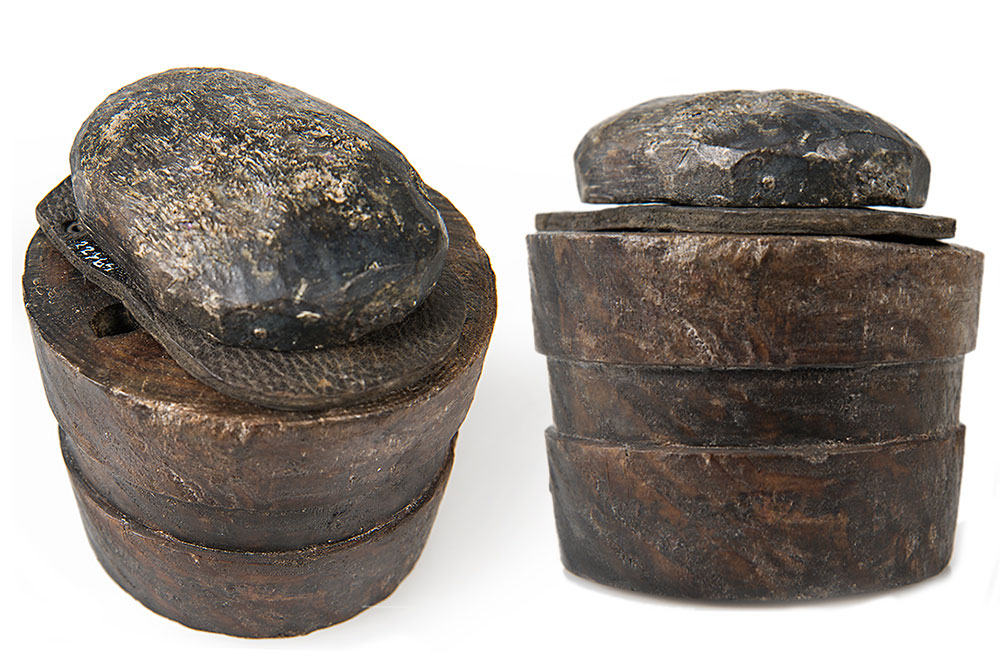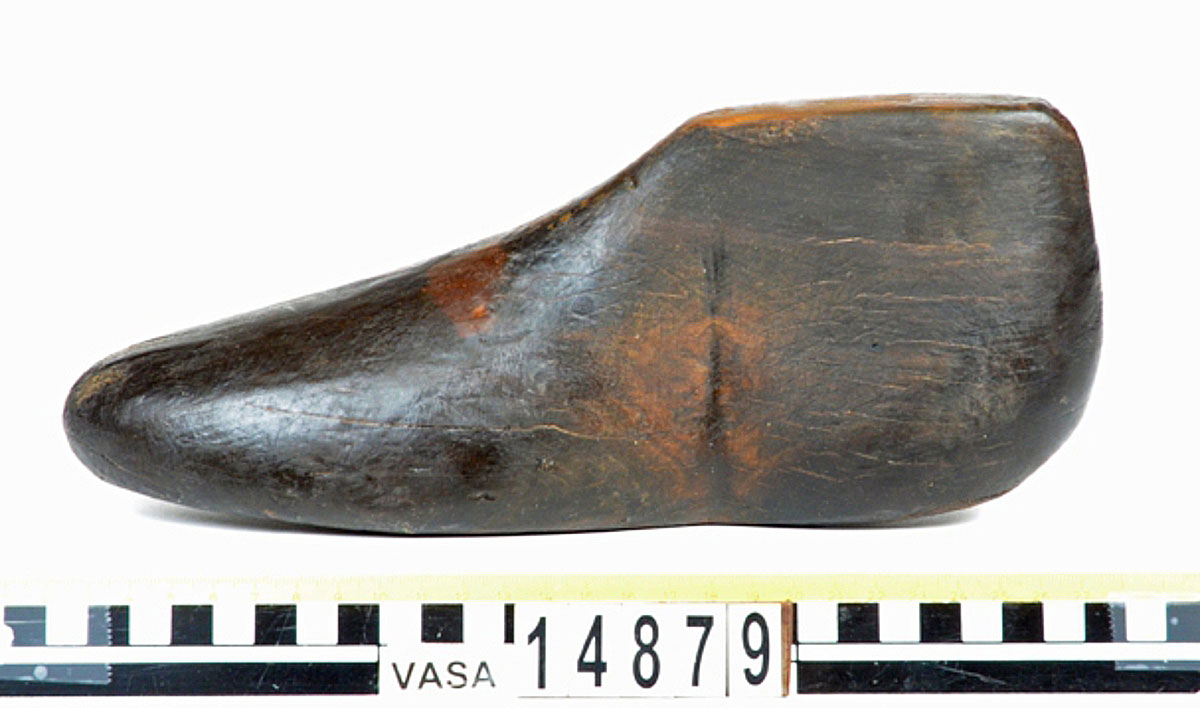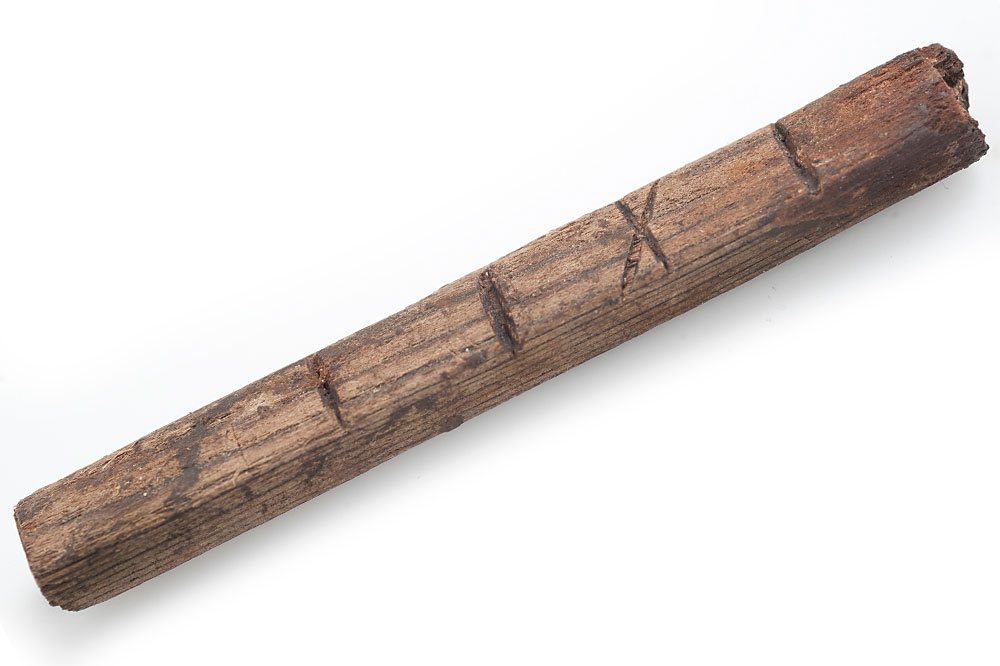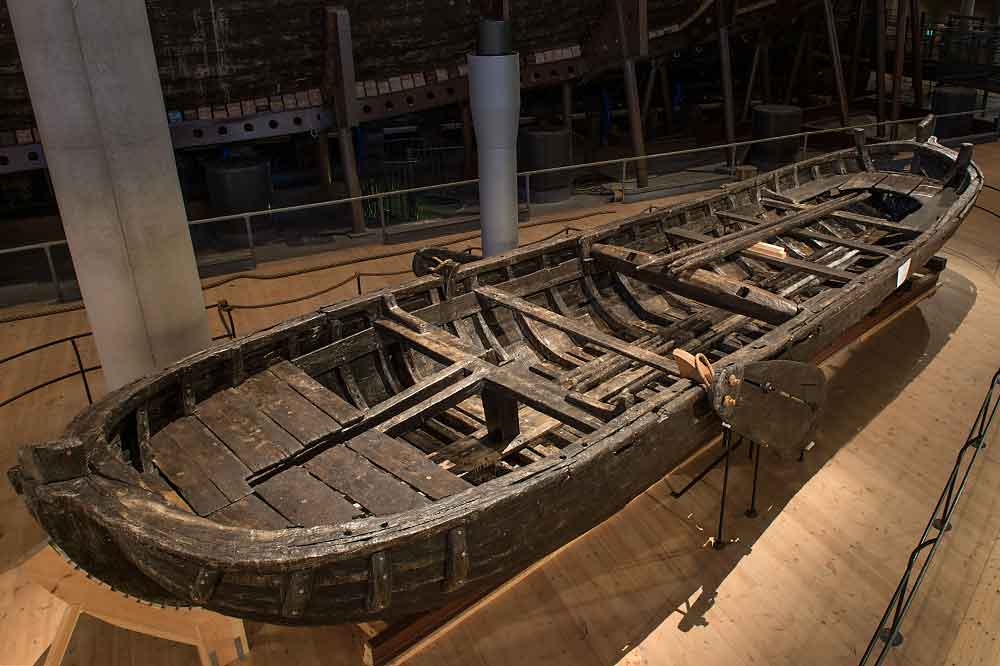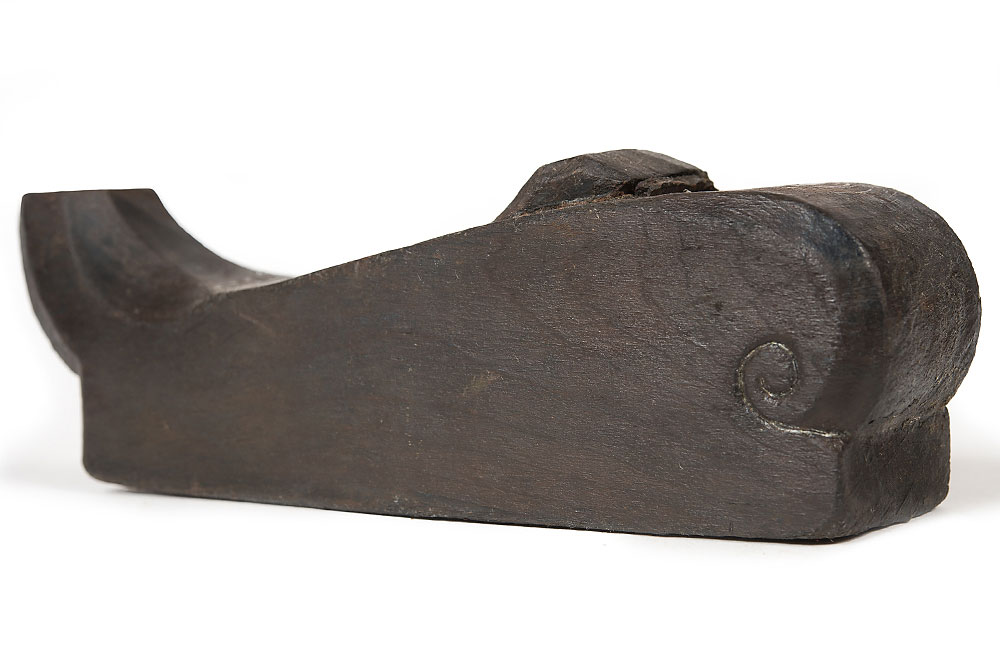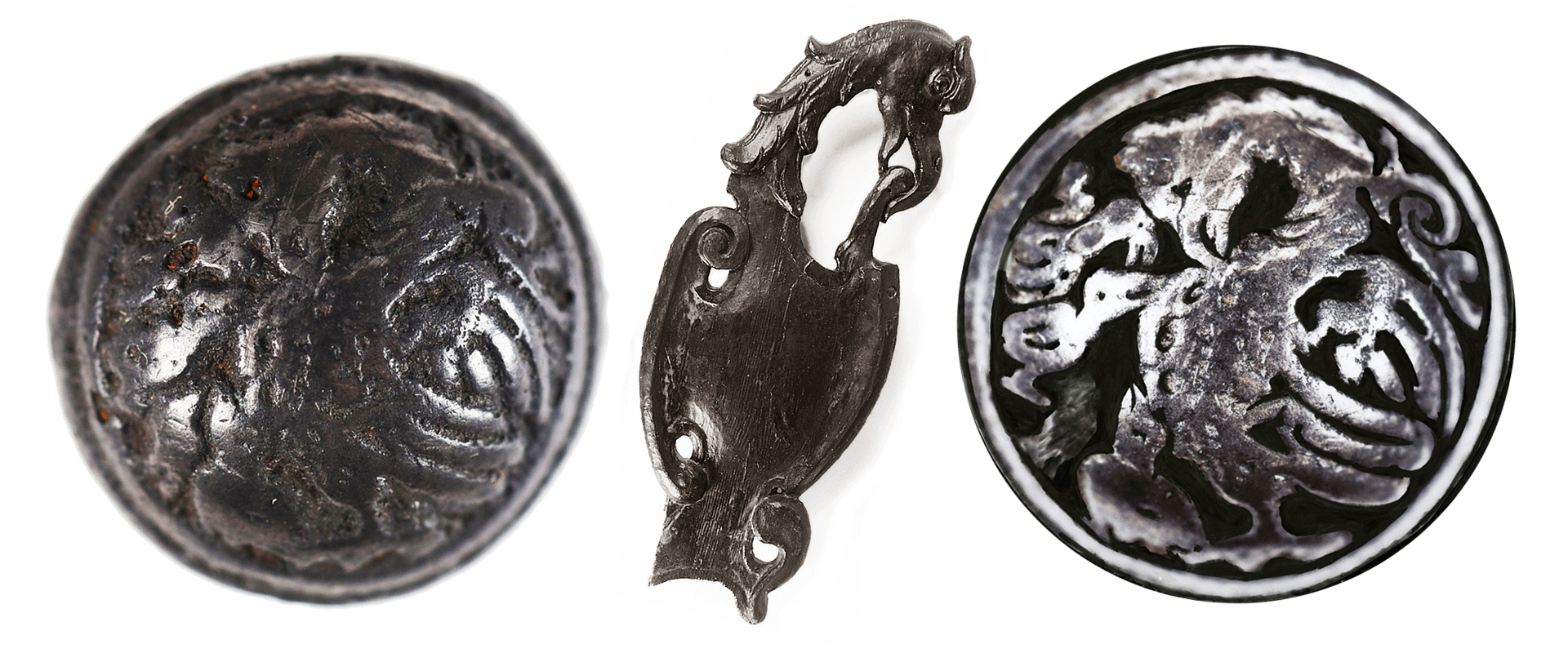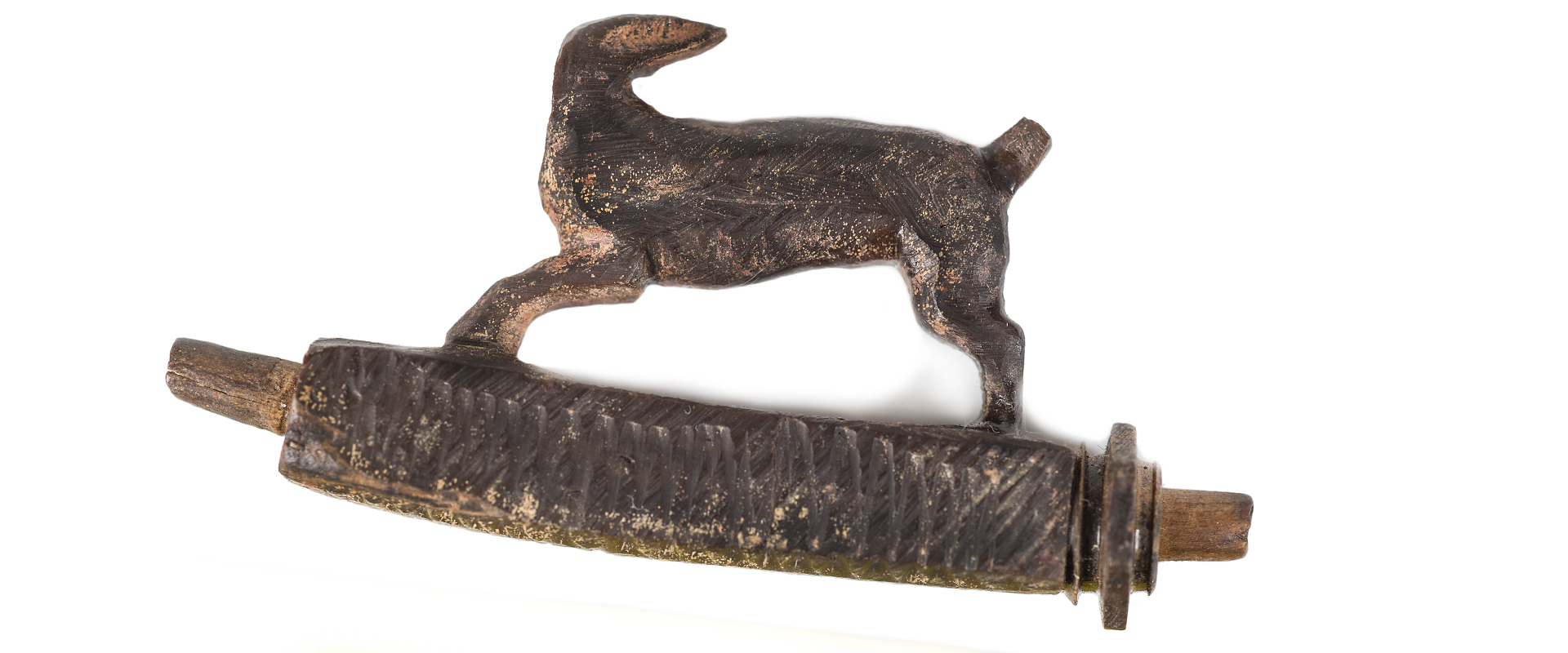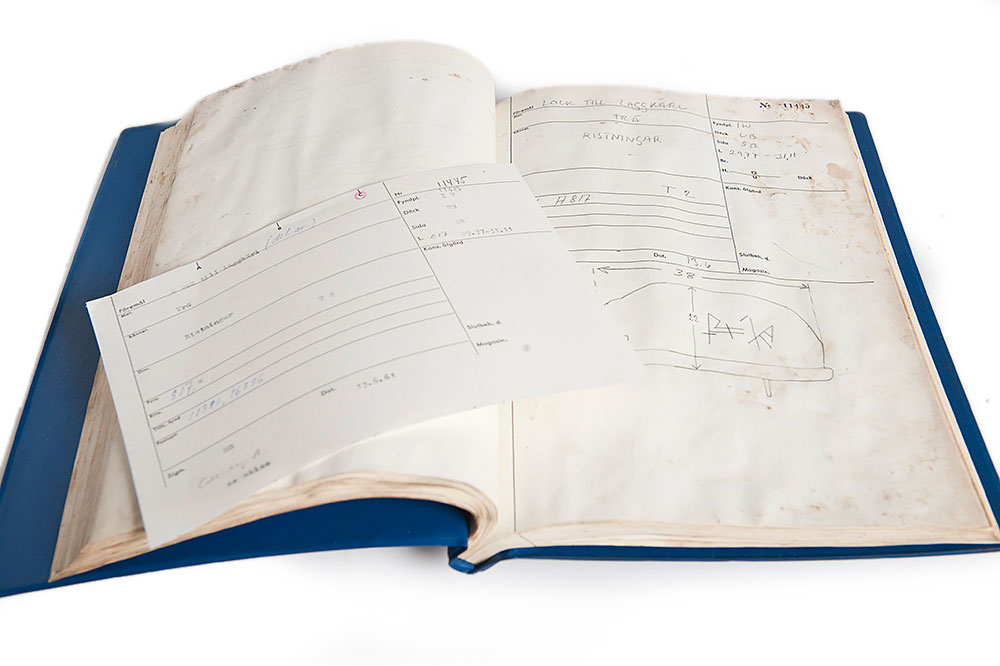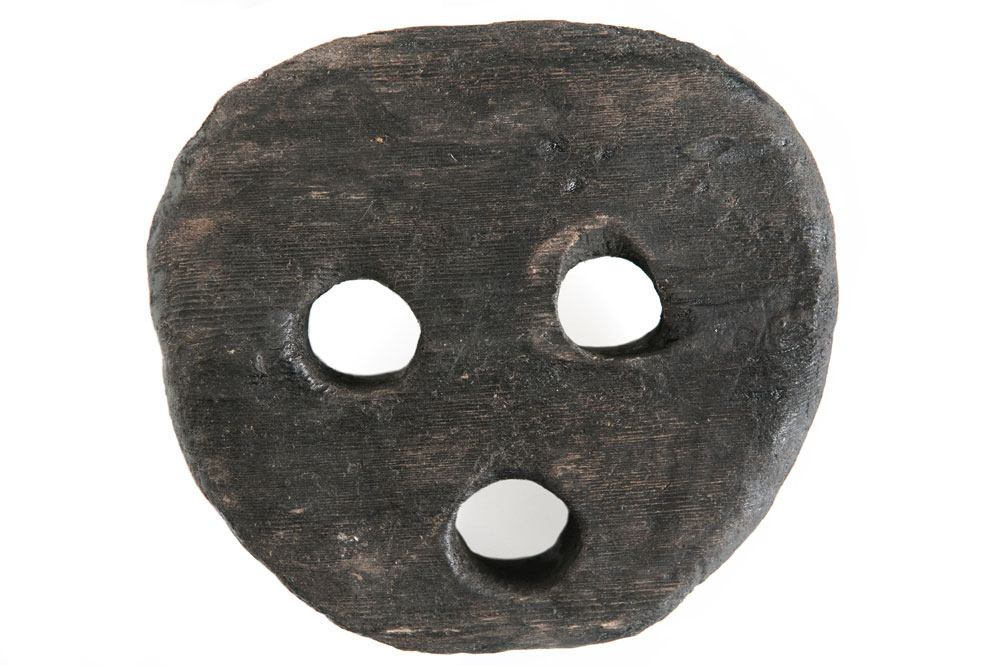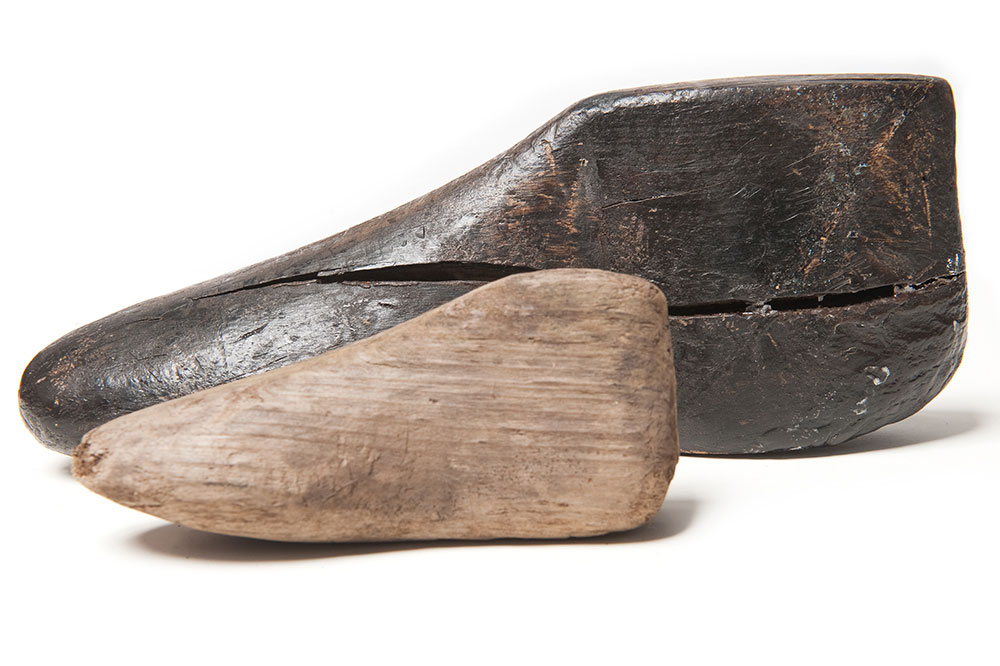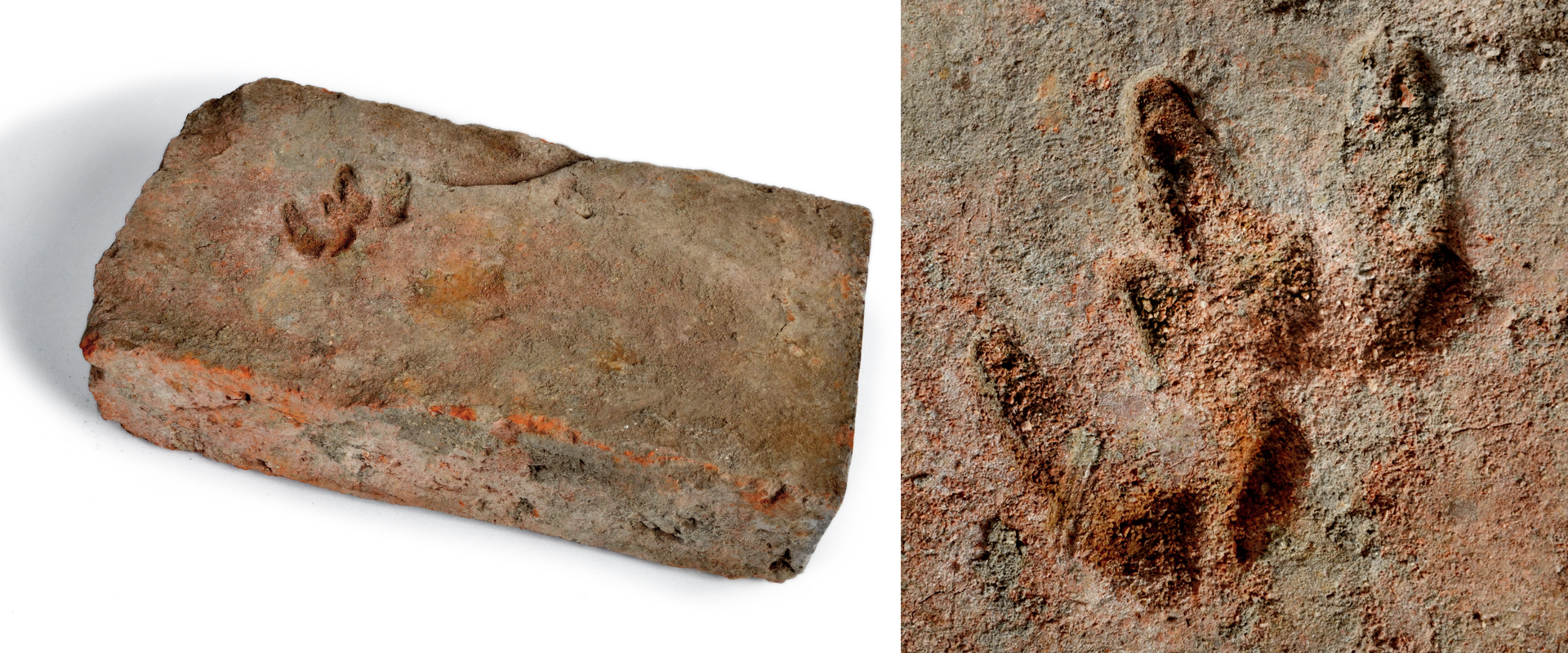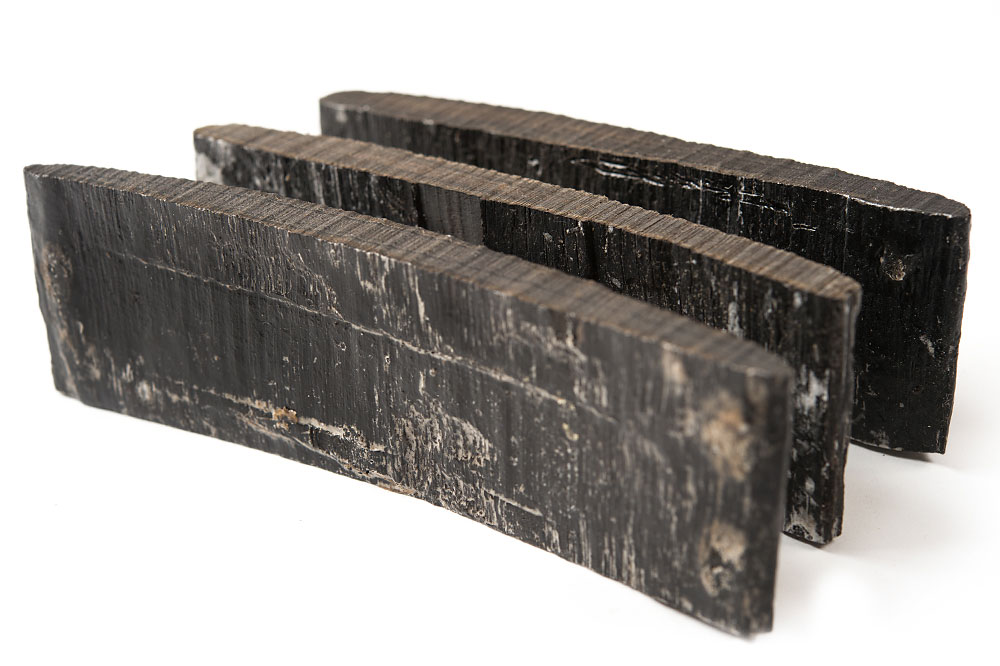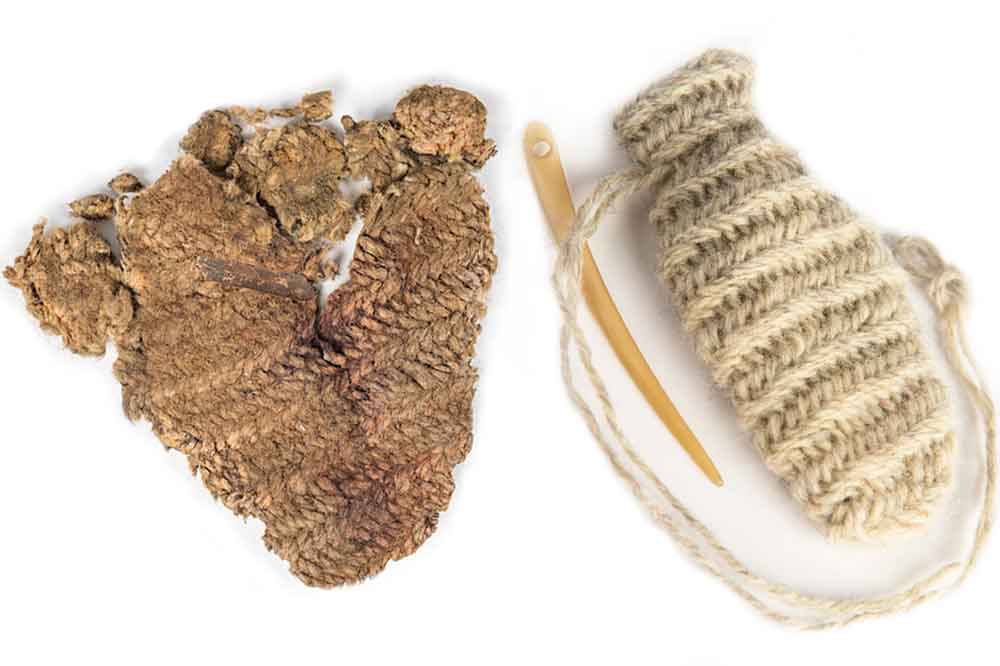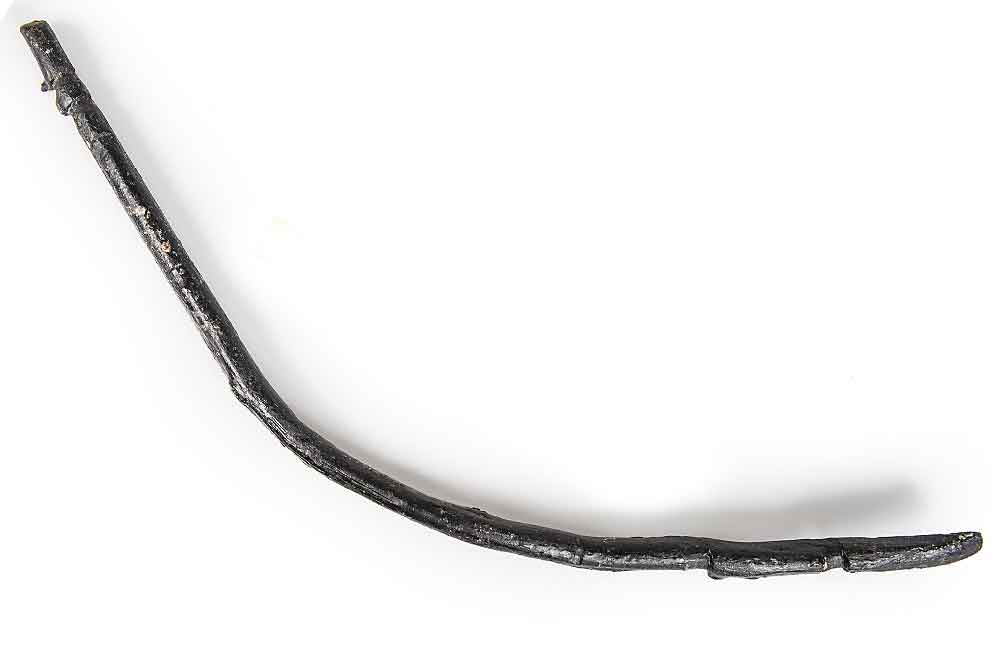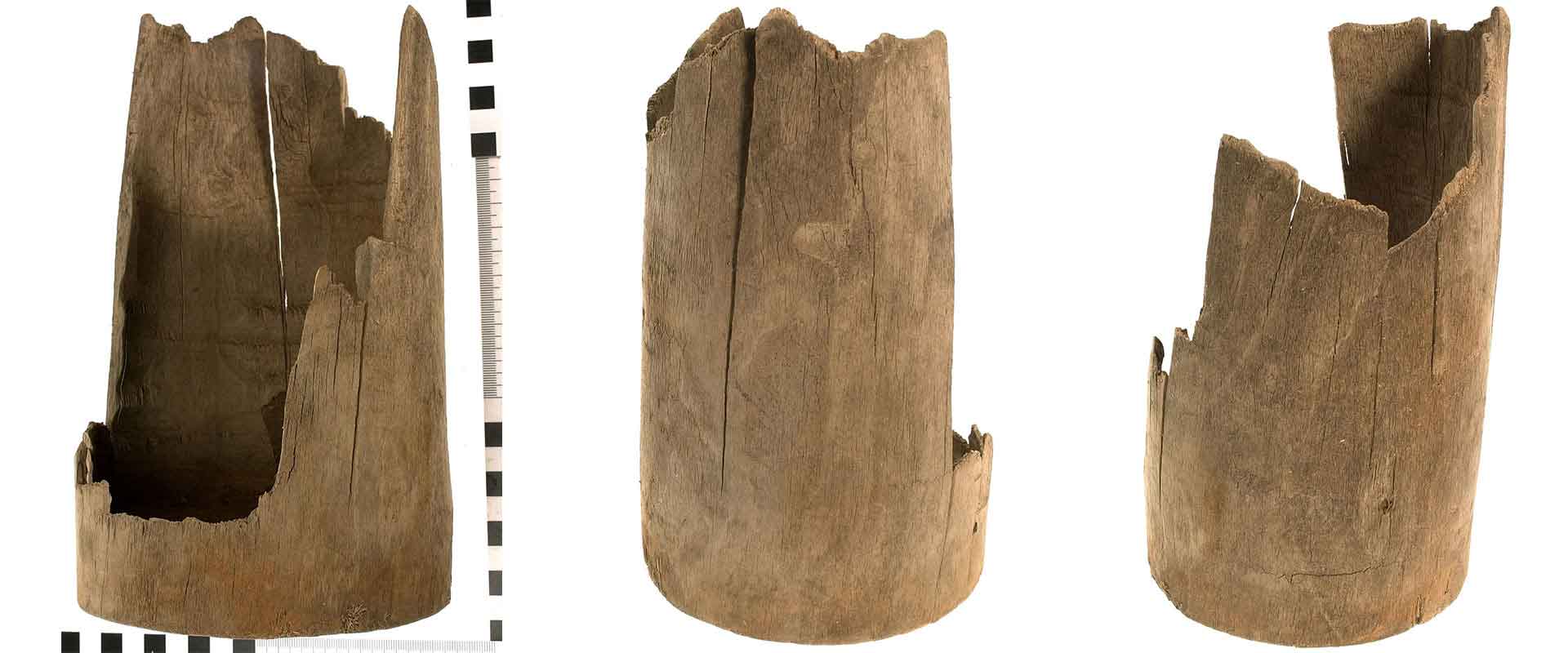The object in this case is called a pumphjärta (“pump heart”) in Swedish, a lower pump box in English, and was part of one of the ship’s bulge pumps. It is a turned wooden cylinder with a large central hole, covered on top by a hinged leather flap valve, called a clack or clapper. It was placed near the bottom of the pump, and allowed water to pass upwards, but the clack would close to prevent water running back down, just as in a valve in the heart. There are two smaller holes either side of the large hole, where an iron staple was fastened. This allowed the box to be pulled up easily for repair or cleaning.
Higher up in the pump tube was the upper box (pumpkanna or “pump can“ in Swedish), which was a piston with a similar hole and clack in the middle connected to an iron rod, the spear, which a crewman used to pull the upper box up and down. On the down stroke, the upper clack opened and the lower clack closed, allowing the upper box to pass through the water in the tube. On the up stroke, the upper clack closed and the lower clack opened, so that the upper box lifted the water above it to the outlet at the top of the tube and sucked water up from the bilge below it through the lower box.
Vasa was equipped with four pumps, one made of an alder tree bored out over its length, and three made of soldered lead pipe; one of the lead pumps had a double set of upper and lower boxes.
There are many spares, both of the lower- and upper boxes, which shows how important pumps were to the safe operation of the ship.
